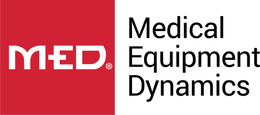On June 3, 2025, the U.S. Food and Drug Administration (FDA) released updated guidance concerning the reprocessing of single-use medical devices (SUDs). The update clarifies and tightens expectations around how these devices can be safely reused when processed by third-party reprocessors or by in-house hospital programs. As healthcare systems strive to reduce costs, improve sustainability, and manage equipment shortages, this change has wide-ranging implications.
At the same time, this development draws renewed attention to the growing acceptance of reprocessed and refurbished equipment—categories that have long been viewed as cost-saving, but which are now also being recognized for their role in environmental stewardship and long-term procurement strategies.
What Is Reprocessing—and Why the FDA Update Matters
Reprocessing refers to the validated cleaning, sterilization, and functionality testing of medical devices that are originally intended for one-time use. These include items like electrophysiology catheters, surgical blades, endoscopic accessories, and even certain orthopedic tools. While this has been standard practice in many hospital systems through third-party services, the FDA's June 2025 guidance expands what documentation and testing reprocessors must provide in order to maintain compliance and safety.
The FDA now requires enhanced evidence for:
- Biocompatibility: Showing that repeated use does not cause harmful chemical or material interactions.
- Sterility Assurance: Proving that sterilization is effective after each reprocessing cycle.
- Device Functionality: Ensuring the item performs identically to new after multiple uses.
- Material Degradation Tracking: Testing for wear and fatigue that could lead to failure over time.
To read the full FDA update, visit the official page: FDA Guidance Document on Reprocessing of SUDs (June 2025)
Benefits for Healthcare Facilities
Healthcare administrators and clinical procurement teams will now have better visibility and assurance when purchasing or reusing reprocessed SUDs. With an average savings of 30–50% compared to new devices, the economic advantage of reprocessing is significant. In operating rooms and high-turnover departments like cardiology or electrophysiology, cost savings can total hundreds of thousands of dollars annually.
In addition to financial benefits, the updated guidance supports broader environmental sustainability initiatives. Reprocessing reduces landfill waste from hospitals, which generate more than 2 million tons of medical waste annually in the U.S. alone. According to a 2024 report from the American Hospital Association (AHA), sustainability is now a top priority for over 70% of large hospital systems.
See the full AHA sustainability report here: American Hospital Association – Environmental Sustainability in Healthcare
Impacts on Refurbished and Pre-Owned Equipment Markets
While the FDA guidance focuses on single-use devices, the broader impact extends to the refurbished medical equipment market. As healthcare providers gain confidence in regulatory oversight, they're more open to purchasing pre-owned capital equipment—such as anesthesia machines, infusion pumps, or patient monitors—when they come with full documentation and quality guarantees.
This shift is especially timely given ongoing supply chain delays and increased pressure on procurement budgets. Refurbished equipment can be deployed faster, at lower cost, and with minimal training required. What matters most is traceability, certification, and compliance with FDA standards—three areas where established resellers and refurbishers must demonstrate credibility.
Hospital-Based Reprocessing: A Growing Trend
The new FDA update also opens more structured opportunities for in-house reprocessing. For hospitals with the scale, resources, and regulatory knowledge to manage their own device cleaning and validation programs, this presents a long-term way to control costs and improve supply consistency.
Facilities interested in in-house reprocessing will need to invest in validated equipment and follow strict protocols, but the benefits may include faster turnaround, fewer third-party dependencies, and stronger supply chain resilience. MED can support this initiative by providing validated capital equipment for sterilization, cleaning, and testing workflows.
How Medical Equipment Dynamics Supports Compliance and Savings
At Medical Equipment Dynamics (MED), we understand that purchasing decisions are about more than just cost—they’re about trust, performance, and long-term value. That’s why we partner with FDA-compliant refurbishers and suppliers who can provide full validation reports, service history, and performance documentation on every device we sell.
Whether you’re sourcing ultrasound systems, surgical tools, ventilators, or stretchers, we ensure that our equipment meets the latest industry and regulatory standards. We also assist clients who are pursuing hospital-led sustainability and cost reduction initiatives by recommending products best suited for reuse and longevity.
Looking Ahead: What Facilities Should Do Next
For healthcare buyers, the FDA’s updated SUD guidance is a signal to rethink how medical equipment is sourced, reused, and valued. It’s an invitation to adopt more sustainable, cost-conscious strategies while staying within regulatory guardrails. Whether you're exploring third-party reprocessing or expanding your use of refurbished capital assets, now is the time to act strategically.
Key considerations include:
- Reviewing supplier credentials and asking for updated documentation
- Evaluating in-house reprocessing capabilities and compliance needs
- Exploring refurbished alternatives for high-volume equipment
- Ensuring traceability of all refurbished or reused devices
Further Reading on Reprocessing Economics
For a deeper understanding of the financial implications of reprocessing, see this 2023 study published in Becker’s Hospital Review:
How Hospitals Are Saving Millions by Reprocessing Medical Devices – Becker’s Hospital Review
Find Reliable Equipment with Confidence
MED is committed to providing safe, certified, and cost-effective medical equipment that fits within evolving compliance frameworks. Our team monitors changes in FDA policy so we can guide you toward informed purchasing decisions. We also make it easy to access inspection records, cleaning protocols, and warranty details before any order is finalized.
Explore our curated catalog of FDA-compliant refurbished equipment at MED.equipment. From critical care to surgical suites, we help you lower costs without compromising quality, safety, or speed of care.

